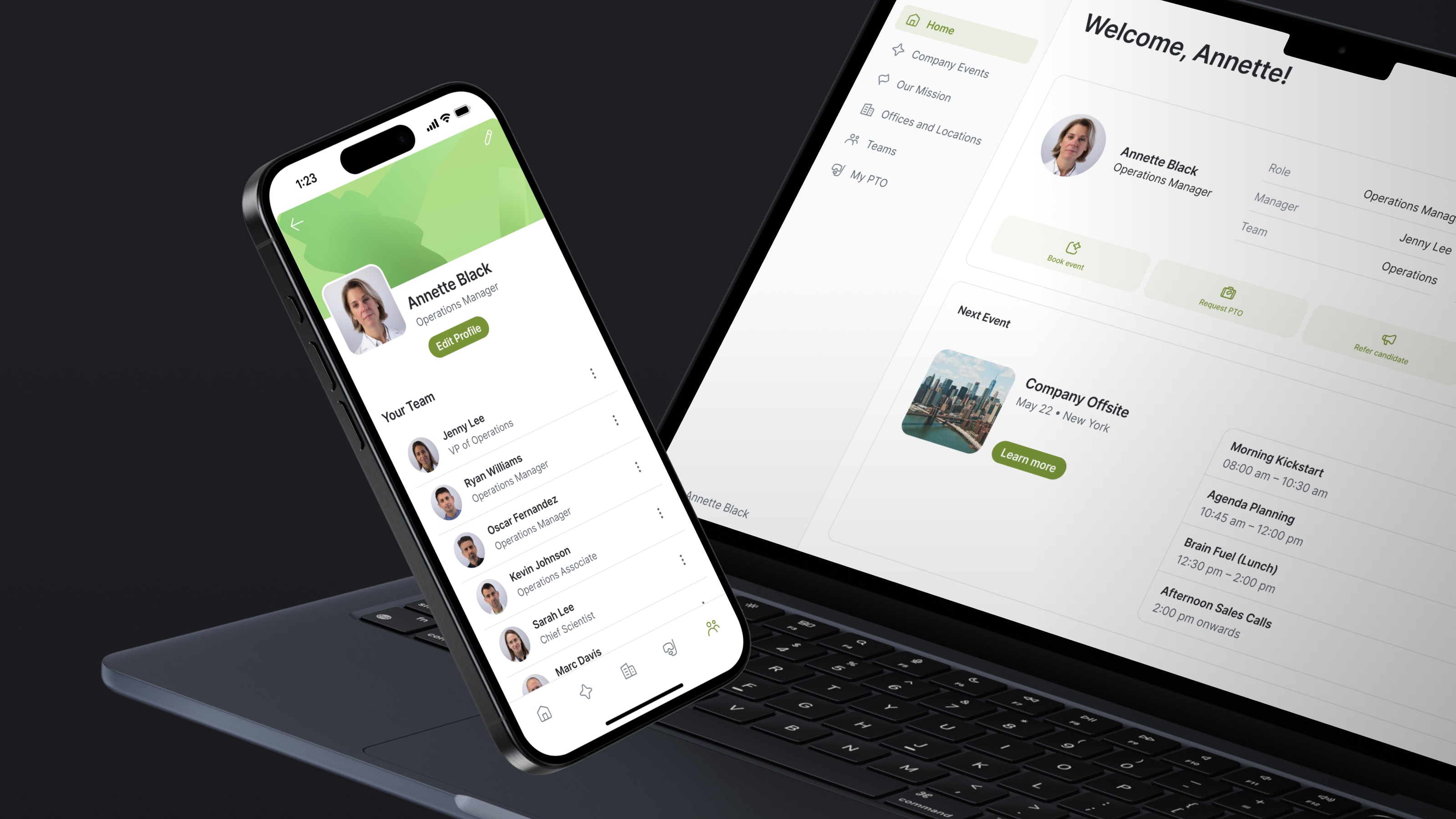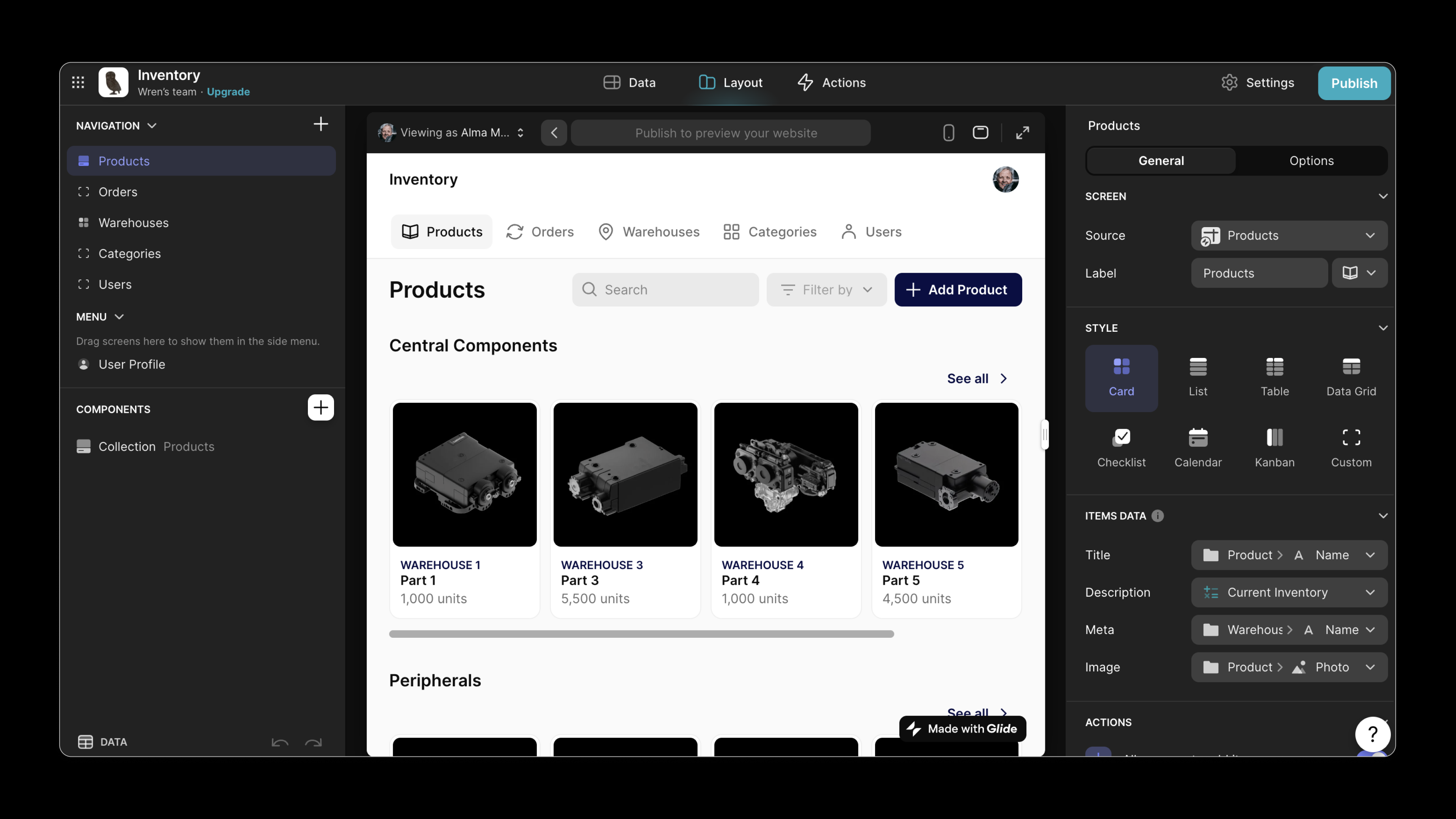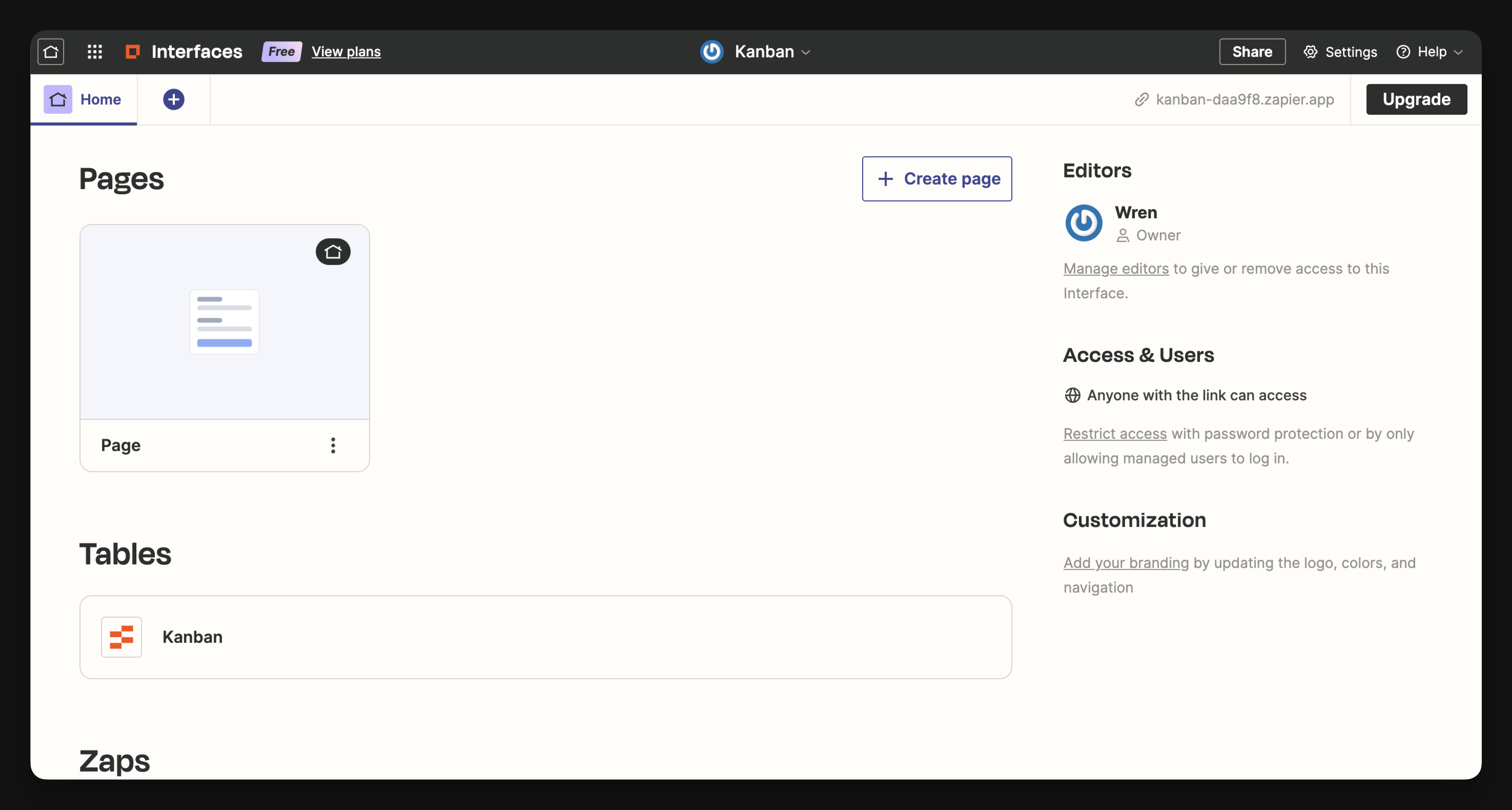We use apps all day, every day. For fun and for work, we are constantly on our phones and computers interacting with software.
However, until recently, only the special few of us who had the knowledge—and, more importantly, the time—to code an application from scratch were able to actually participate in mobile app development. Luckily for the rest of us, WYSIWYG app builders and no code technology mean making an app in 2024 is a whole lot easier than it ever has been.
The power to build software visually makes learning to create apps infinitely easier. It also frees us from having to rely on developers or poorly fitting off-the-shelf software to help us with our work processes. If you’re looking for a WYSIWYG app builder to get started on, this guide will help you choose the right mobile app development platform for your needs.
What is WYSIWYG app development?
WYSIWYG, Pronounced [WIZ] + [EE] + [WIG], stands for “what you see is what you get”. WYSIWYG platforms visual development tools that let you create software with an intuitive interface and drag & drop pre-built components. Considered a kind of no code tool, WYSIWYG app builders allow you to create web apps and mobile apps without having to use any coding language.
Visual development basically means you are prototyping your app as you go. You can change layout, design, and functionality and see the edits you make to the interface in real time. You might start with a template or a blank canvas, and then drag in components, choose design options from a picker, or add actions, integrations, and data to your new app from a menu.

Pros and cons of a WYSIWYG app builder
Before beginning to experiment with an app-building platform, it helps to understand the benefits of WYSIWYG app development and its limitations as a technology. This will help you choose the right platform for your needs and choose the right use cases to start with.
WYSIWYG benefits
- Create it yourself—Teams without development talent can create their own tools to streamline their work and power their tasks. You know your needs better than anyone else, making you the perfect person to create your own solutions.
- Build and iterate faster—Creating an app with a WYSIWYG platform is significantly faster than trying to code one from scratch, even if you have an experienced development team on hand. What would take months of development if coding by hand can be completed in weeks or even just days with a no code platform. When you need to make changes, you can implement them immediately instead of waiting on an IT ticket.
- Spend less—Developers and development time are expensive. Creating apps with a WYSIWYG app builder is magnitudes less expensive than hiring a development team. You can even work with a no code developer at significantly lower expense.
- Build a wider range of apps—When you have more flexibility in your design process and can work faster and cheaper, you can afford to build things that wouldn’t have been financially feasible before. This means your team benefits from a wider range of business tools and solutions.
- Immediate feedback—When working with WYSIWYG app builders, the changes you make are reflected in real time, making it easier to catch and fix mistakes — no digging through pages and pages of source code to find and fix an error. You can refine your tools much more quickly and intuitively.
WYSIWYG Cons
- Learning curve—While visual development is easier and more intuitive than coding, it’s still a type of design and comes with a learning curve. Some platforms are harder to learn than others, but having a baseline understanding of how computers work, especially things like user interface design, data structures, and basic logic, will help you create better apps. App templates and tutorials can help, so look for a platform with good support.
- Platform-dependent limitations—The WYSIWYG platform you choose will determine what kinds of apps you can build and what features you can include in your app. Some platforms are more powerful but harder to use, others are easy to learn but limited. Some platforms are designed for casual use, some focus on creating internal business applications, and others focus on helping entrepreneurs launch an app as a business. Your tool might build progressive web apps (PWAs) or native apps that can only be downloaded on iOS or Android. If you don’t choose the right platform for your needs, you’ll struggle with the app development process.
- Integration needs—You may need to use integrations with other tools or plug-ins to get more specific functionality, such as an e-commerce store, onto your app.
- Design & functionality limitations—Since the platform you use pre-sets your design options, you will naturally have some limitations in how much you can customize your app. No code, and WYSIWYG will never be as fully adaptable as something coded from scratch.
- Lack of support for hyper-specialized industries—If you’re in an industry that uses a lot of niche proprietary systems or has high security or legal requirements (like banking, government, and healthcare), WYSIWYG apps may not be able to meet the requirements of your business. Check your platform for compliance with regulations requirements like HIPPA or GPDR.
5 Best WYSIWYG App Builders
There are many WYSIWYG development platforms on the market, but the right one for your needs will depend on what you need to build. These top five best WYSIWYG app builders will help you create everything from the next big thing on Google Play to a quick customer feedback form.
Glide: Best for business tools

Glide began as a tool for turning spreadsheets into business apps, and that data-first approach has driven its development since. If you’re trying to build better business processes and use your data to drive your operations, Glide is best suited to your needs. It is an excellent choice for building customer portals, employee interfaces, data dashboards, or mobile field team applications.
This web app builder offers a design system with beautifully designed-prefabricated components that give your app a professional feeling user experience. It uses adaptive design to make your app function naturally across all devices, and its built-in backend offers a native data editor that lets you make powerful computations. A mobile app builder like Glide is generally best for businesses since your apps will be easily accessible by browser on any device, without the barrier of having to download it onto the mobile devices of each user.
It’s also faster than the other tools on the market and is a truly no code tool, unlike other platforms that require some development experience to succeed with. Since Glide is fast to build and iterate with, your team will be able to add new features whenever they are needed.
You can get started by browsing templates or learning the platform through the tutorials on Glide University.
Try Glide with a free trial today.
Bubble: Best for public-facing apps

Bubble.io is a powerful WYSIWYG app builder with extensive customization capabilities. It comes with a matching learning curve and is best suited for users who are already fairly skilled with technology. It can be considered more of a low-code platform, and it takes work to get a beautiful design and take full advantage of its customization capabilities.
Bubble’s plans and features best suit entrepreneurs and business owners who want to create a prototype or MVP or a SaaS product to publish on an app store. It includes features to help with customer-facing apps, like the ability to create a native app frontend and SEO optimization features. Bubble pricing is also built around the assumption that users want to create one app rather than many small ones, so it makes more financial sense if your plan is to build one publicly available app rather than multiple tools for your team.
Making native apps with Bubble is a good choice if you want to make a native app as a product since users will be able to purchase and download your app from an app store like Google Play or Apple’s App Store. Native apps have the advantage of being able to use native device functionality like push notifications and location services. However, you’ll need to make both an Android app and iOS app separately.
Softr: Best for fast, simple tools

Softr is the fastest, easiest drag-and-drop app builder to learn, with an especially user-friendly interface. If you use Airtable, you should have a fairly easy time turning your spreadsheets into apps with Softr. If you have a team with a need for speed, low technical skill, and basic expectations for customization, Softr will help you spin up simple apps quickly and efficiently.
Softr is a quickly growing mobile app development platform, so its capabilities are growing quickly, but it’s still more suitable to quick, simple tools than building complex workflows.
Airtable Interface Designer: Best for interacting with Airtable data

While most people have used Airtable to store and sort data, it also has a built-in app designer, Airtable Interfaces. If your data already lives in Airtable, this is an effective and efficient way to help the rest of your team interact with your data better. It’s a great tool for displaying complicated data, adding visualizations like charts and graphs, and generating reports.
Airtable Interface Deisgner is truly only suited for internal tools, however. It doesn’t create a polished app that can be presented to external teams, clients, or contractors.
Zapier Interfaces: Best for forms and workflows

Zapier is an automation tool for connecting software, scheduling tasks, and creating custom workflows. It also recently launched a builder for creating interactive web experiences. Given Zapier’s focus on connecting other tools, it’s no surprise that its interface builder is highly connected and well-suited for integrating with different software.
However, Zapier Interfaces isn’t yet capable of creating a fully functional application. It’s perfect if you have a specific need, like creating a web form to collect information from customers or get feedback from employees. It’s useful for making AI chatbots, Kanban boards, tables, and web forms.
Learn the logic of WYSIWYG app development
The most exciting thing about WYSIWYG application development is that it's truly a new way of building for the web. When you use a no code app builder, especially if you are incorporating AI technology, your abilities suddenly increase exponentially. Businesses that never had the ability to make custom software are suddenly in charge of their own tech stack. You might use Zapier Interfaces to fix a specific problem or build out a whole business operations stack on Glide. You can even integrate these tools to customize your tech even further.
Once you’ve learned no code, you have control over all of your tools. You aren’t financially strapped to a development team or at the mercy of off-the-shelf software that’s rigid and loaded with unnecessary features. If you want to learn more about the principles of no code app development, try taking Glide’s Certification Course and get certified in everything from APIs to UX design. With these tools in your belt, you can build whatever you want.







